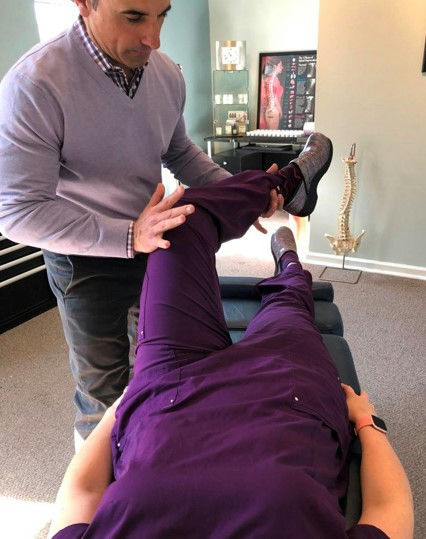Welcome to Chi-research
A weekly publication by ProCredits reviewing current research associated with the Chiropractic profession. In this week’s edition, we review a 2023 article using a randomized control trial to evaluate the effect of adding diaphragmatic breathing exercises to core stabilization exercises in patients with chronic low back pain.
Chronic Low Back Pain
Low back pain (LBP) is a common health problem, accounting for the third most common reason for doctor visits. It is estimated that 82% of the population will experience back pain during their lives, and 10% of those cases become chronic. Chronic low back pain is defined as pain persisting over 3 months, consisting of spinal instability, impaired postural control, altered proprioceptive acuities, altered muscle activation patterns, fatigued back extensors, and somatosensory system alterations.
CLBP is etiologically related to the core trunk musculature—a box-like structure surrounded by the abdominal, paraspinal, diaphragm, and pelvic floor muscles—that provides primary stability to the lumbar spine.
Core stabilization exercises (CSEs) are a key component in managing CLBP. During CSEs, local muscles activate through isometric contraction of the transverse abdominis (TrA), causing co-contraction of the lumbar multifidus, small segmental spinal muscles that provide segmental control over primary stabilizers. The diaphragm, as the primary inspiratory muscle, affects lumbar spine stability during postural activity.
Proper diaphragm activation during normal breathing expands the lower ribs from inside to outside, increasing intra-abdominal pressure. The TrA acts like a corset by stretching the fascia and building intra-abdominal pressure to stabilize and unload the lumbar spine. Studies show diaphragm fatigability is common among recurrent LBP sufferers, reducing TrA pulling forces on the fascia and compromising lumbar stability.
Today's Spotlight: Chronic Low Back Pain
In the spotlight study, Effect of Adding Diaphragmatic Breathing Exercises to Core Stabilization Exercises on Pain, Muscle Activity, Disability, and Sleep Quality in Patients with Chronic Low Back Pain: A Randomized Control Trial, the authors added diaphragmatic breathing exercises (DBE) to CSEs to test improvements.
- 22 patients with CLBP were randomly assigned to:
- Experimental group: DBE + CSE
- Control group: CSE only
- Each group had 12 treatment sessions (3 times/week for 4 weeks).
- Evaluations included:
- Surface electromyography of transverse abdominis
- Oswestry Disability Index
- Fear Avoidance Belief Questionnaire
- Pittsburgh Sleep Quality Index
- Numeric Pain Rating Scale
- Chest expansion
These outcomes measure pain, muscle activity, disability, and sleep quality—all typically negatively correlated with CLBP. For example:
- 55% of CLBP patients report restless sleep
- Chest expansion is significantly reduced
- Fear of pain-eliciting activities is elevated
Results showed DBE + CSE significantly improved all outcomes compared to CSE alone, enhancing core muscle activation and chest expansion.
How to perform the Diaphragmatic Breathing Technique for Chronic Low Back Pain
- Lie on your back on a flat surface or bed with knees bent and head supported. Optionally place a pillow under knees. Place one hand on your upper chest and the other just below your rib cage to feel diaphragm movement.
- Breathe in slowly through your nose so your stomach moves out against your hand. Keep the hand on your chest as still as possible.
- Tighten your stomach muscles, letting them fall inward as you exhale through pursed lips. Keep the hand on your chest still.
- Practice 2–5 minutes daily until natural, then try seated.
Treat Your Chronic Low Back Pain and More
Check out ProCredits’ free one-hour course with ProCredits! Don’t miss this opportunity to see why ProCredits should be your go-to for chiropractic continuing education and take your practice to the next level.
This course provides valuable insights and hands-on experience to enhance your skills and proficiency.
Ready to take proactive steps toward a healthier back? Sign up now and start learning. Follow us on Facebook and subscribe to our YouTube channel for weekly updates!
Live Webinar: Chiropractic Recordkeeping & Coding to Prevent Audits
Join us for a crucial webinar, led by industry expert Marty Kotlar DC, CPCO, CBCS, COF! Mark your calendars for May 9, 2024, from 1–3pm EST.
Dr. Marty Kotlar, President of Target Coding and renowned chiropractic documentation guru, will cover:
- Chiropractic evaluation and management
- Time vs clinical decision-making
- Common ICD-10 codes
- Therapeutic procedures
- Key recordkeeping components
- Outcome assessment measures
- How to avoid common documentation mistakes
All for just $29! Don't miss this chance to enhance your practice and safeguard against audits.
Video Testimonials: Uncover Real Chiropractic Journeys
Explore the real experiences of chiropractors who have navigated their education with ProCredits. Gain authentic insights into the value and rewards of Chiropractic Continuing Education Hours.
In a profession as dynamic as chiropractic care, continuous learning is paramount. Stay updated with the latest advancements, techniques, and research to deliver top-notch patient care. Let these journeys guide you with ProCredits.
Masroor S, et al. Effect of Adding Diaphragmatic Breathing Exercises to Core Stabilization Exercises on Pain, Muscle Activity, Disability, and Sleep Quality in Patients With Chronic Low Back Pain: A Randomized Control Trial. J Chiropr Med. 2023 Dec;22(4):275-283.








